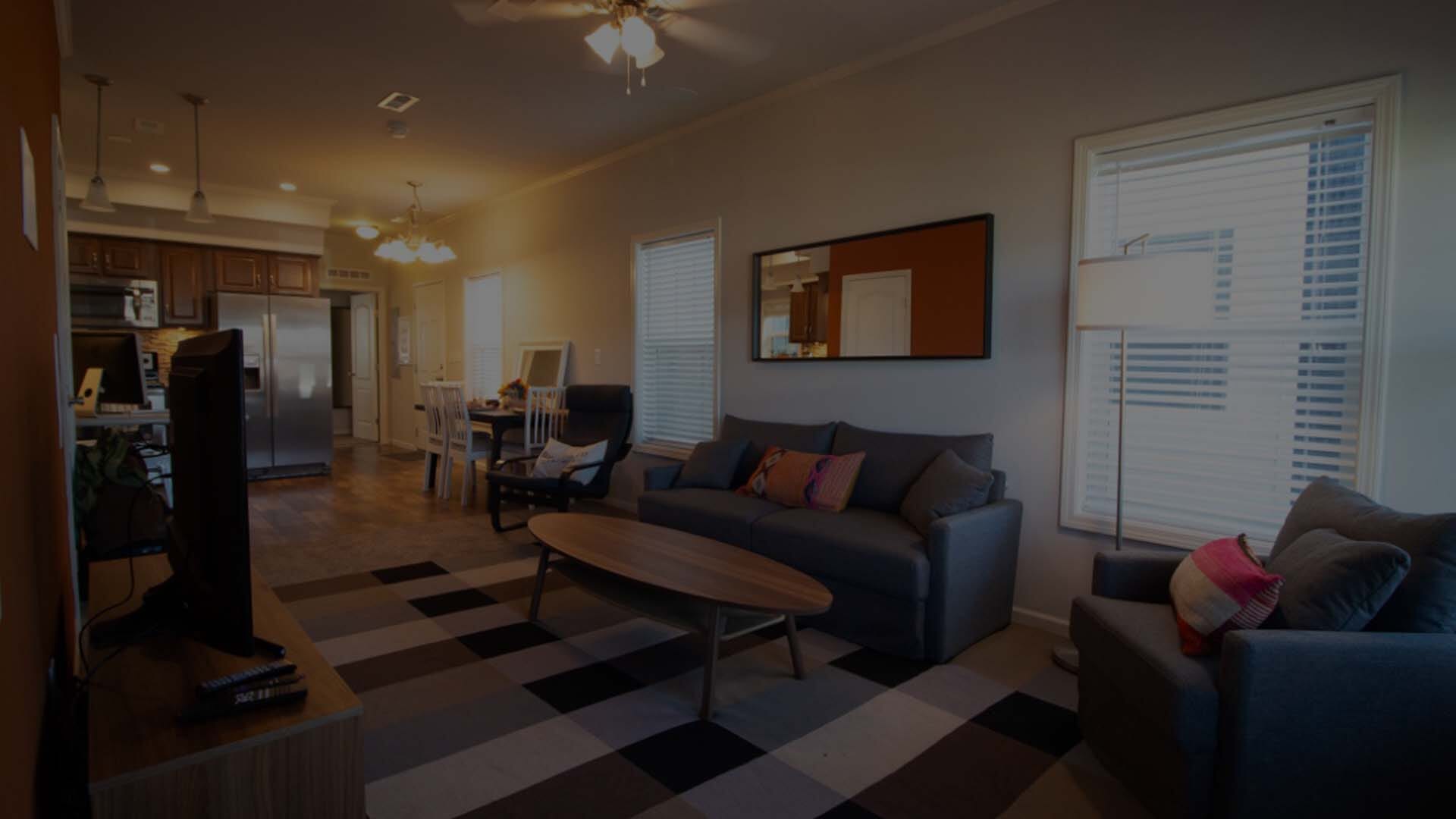 Credit: Tyler Schaefer / Unsplash
Credit: Tyler Schaefer / UnsplashCo-living: Definitions and Business Strategies
What real estate investors and developers are thinking about PBSLs?
April 13, 2022Real Estate
The GRI Global Committee’s kickoff session on co-living (Investments in Large Scale Purpose-Built Shared Living: What’s the growth plan?) took place on March 23rd. The meeting gathered C-Level real estate investors, asset owners, operators, and developers.
*Disclaimer: While this review highlights the most relevant topics under discussion, it does not contemplate the full discussion between the Board and all Members. In addition, committee sessions also dedicate time for networking.
Important Takeaways:
• European co-living model is microliving driven;
• Customer experience is on top priority;
• The US lacks a Co-living definition. Occupancy rate may be key;
• Thoughtful common areas rather than larger ones are essential;
• Heterogeneous populations tend to be a hurdle to PBSL models;
• Co-living is a global in-demand asset class
While it has been difficult to establish a clear definition of what co-living is, shared living properties are capturing the attention of the industry as an alternative for emerging high-density residential spaces. However, different terms like purpose-built student accommodation (PBSA), purpose-built shared living (PBSL), student housing, and microliving have been used interchangeably in conferences and among tenants from different countries.
According to data provided by DTZ Investors, an investment fund that focuses on large-scale co-living in Europe, the main role of this type of asset is addressing housing needs for urban renters in high-density cities. They define co-living as a place where people live with shared common spaces and additional amenities like co-working, game rooms, on-site cafes, gyms, and cinema rooms. Besides, residents tend to have their own private studio, between 18 and 25 m².
From a funding perspective, smaller studios enable larger-scale schemes that are not below 200 units. A return of around 8% has been expected in these early years since the pandemic. Over a 10 year period, returns of around 12% are expected.
Co-living customer experience improvements must be on top of priorities for the long-term returns. Other key elements that PBSLs could deliver are flexible contracts (3 to 12 months), all-inclusive bills, and social impact projects for the local community.
While in Europe a microliving model of private studios seems to rule, developers and banks in the US do not seem to have a clear definition for PBSL. It could be considered rather a multifamily housing that targets the young crowd from 18 to 30 years old. At a regulatory level, a solution would be looking at the density of the number of unrelated people living in one dwelling unit. For this matter, the occupancy rate was mentioned as one of the most important data for PBSLs. As it reports the sustainable level of occupancy in a building, it may be the main co-living KPI.
Regardless of its lack of definition, according to some members, the main issue in PBSL is building common spaces that are more thoughtful and cozy, and not necessarily larger.
Some typical multifamily buildings, despite their sometimes huge and glamorous shared areas, are often not very usable. Social operating systems that encourage the community to interact, as well as flexibility in a context of rising inflation, were also mentioned.
Some members added that in India, likewise, from a regulatory perspective, “there isn't anything written on paper” considering PBSLs. A challenge that Indian companies face is that, besides its 1.2 billion people, it is an extremely heterogeneous population.
Uniting real estate developers and investors to rethink PSBL models for the market, and building a common offering becomes a huge obstacle. In the next 2-5 years, leading players working collaboratively might be seeing an uptake in co-living properties in India.
Although the concept of co-living can be still a head-scratcher, members were in agreement that it represents an increasingly global and in-demand asset class. The astounding growth of young professionals, digital-nomad migration, and emerging high-density cities worldwide, demand rethinking the whole scheme of building communities beyond the traditional idea of providing shelter.
Co-living accommodations’ purpose should be to meet the current demands of young professionals, transient populations, and students. Separate leases within an individual dwelling unit, with fewer private areas in exchange for more thoughtful common ones with facilities, could better define PBSLs in a broad sense.
*Disclaimer: While this review highlights the most relevant topics under discussion, it does not contemplate the full discussion between the Board and all Members. In addition, committee sessions also dedicate time for networking.
Important Takeaways:
• European co-living model is microliving driven;
• Customer experience is on top priority;
• The US lacks a Co-living definition. Occupancy rate may be key;
• Thoughtful common areas rather than larger ones are essential;
• Heterogeneous populations tend to be a hurdle to PBSL models;
• Co-living is a global in-demand asset class
While it has been difficult to establish a clear definition of what co-living is, shared living properties are capturing the attention of the industry as an alternative for emerging high-density residential spaces. However, different terms like purpose-built student accommodation (PBSA), purpose-built shared living (PBSL), student housing, and microliving have been used interchangeably in conferences and among tenants from different countries.
According to data provided by DTZ Investors, an investment fund that focuses on large-scale co-living in Europe, the main role of this type of asset is addressing housing needs for urban renters in high-density cities. They define co-living as a place where people live with shared common spaces and additional amenities like co-working, game rooms, on-site cafes, gyms, and cinema rooms. Besides, residents tend to have their own private studio, between 18 and 25 m².
From a funding perspective, smaller studios enable larger-scale schemes that are not below 200 units. A return of around 8% has been expected in these early years since the pandemic. Over a 10 year period, returns of around 12% are expected.
Co-living customer experience improvements must be on top of priorities for the long-term returns. Other key elements that PBSLs could deliver are flexible contracts (3 to 12 months), all-inclusive bills, and social impact projects for the local community.
While in Europe a microliving model of private studios seems to rule, developers and banks in the US do not seem to have a clear definition for PBSL. It could be considered rather a multifamily housing that targets the young crowd from 18 to 30 years old. At a regulatory level, a solution would be looking at the density of the number of unrelated people living in one dwelling unit. For this matter, the occupancy rate was mentioned as one of the most important data for PBSLs. As it reports the sustainable level of occupancy in a building, it may be the main co-living KPI.
Regardless of its lack of definition, according to some members, the main issue in PBSL is building common spaces that are more thoughtful and cozy, and not necessarily larger.
Some typical multifamily buildings, despite their sometimes huge and glamorous shared areas, are often not very usable. Social operating systems that encourage the community to interact, as well as flexibility in a context of rising inflation, were also mentioned.
Some members added that in India, likewise, from a regulatory perspective, “there isn't anything written on paper” considering PBSLs. A challenge that Indian companies face is that, besides its 1.2 billion people, it is an extremely heterogeneous population.
Uniting real estate developers and investors to rethink PSBL models for the market, and building a common offering becomes a huge obstacle. In the next 2-5 years, leading players working collaboratively might be seeing an uptake in co-living properties in India.
Although the concept of co-living can be still a head-scratcher, members were in agreement that it represents an increasingly global and in-demand asset class. The astounding growth of young professionals, digital-nomad migration, and emerging high-density cities worldwide, demand rethinking the whole scheme of building communities beyond the traditional idea of providing shelter.
Co-living accommodations’ purpose should be to meet the current demands of young professionals, transient populations, and students. Separate leases within an individual dwelling unit, with fewer private areas in exchange for more thoughtful common ones with facilities, could better define PBSLs in a broad sense.







